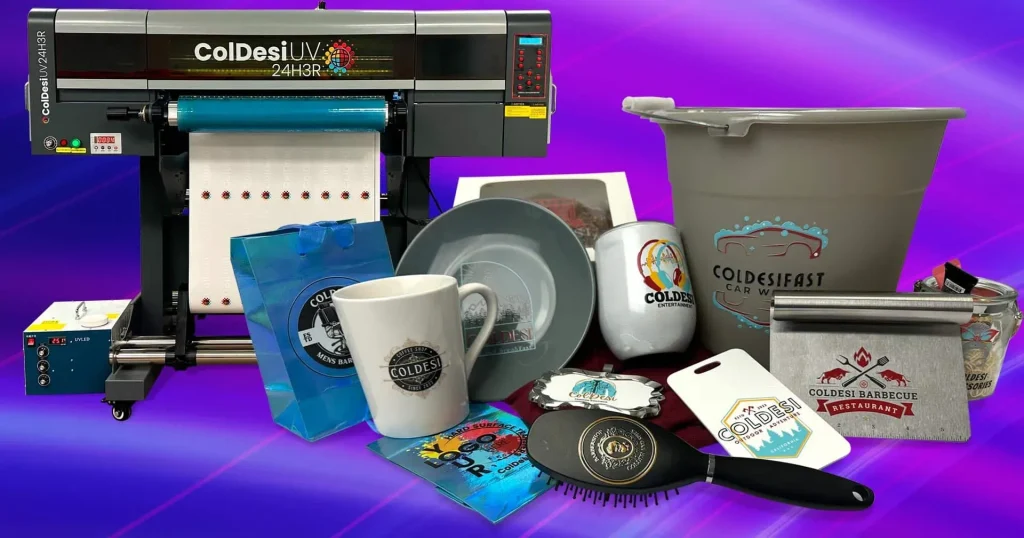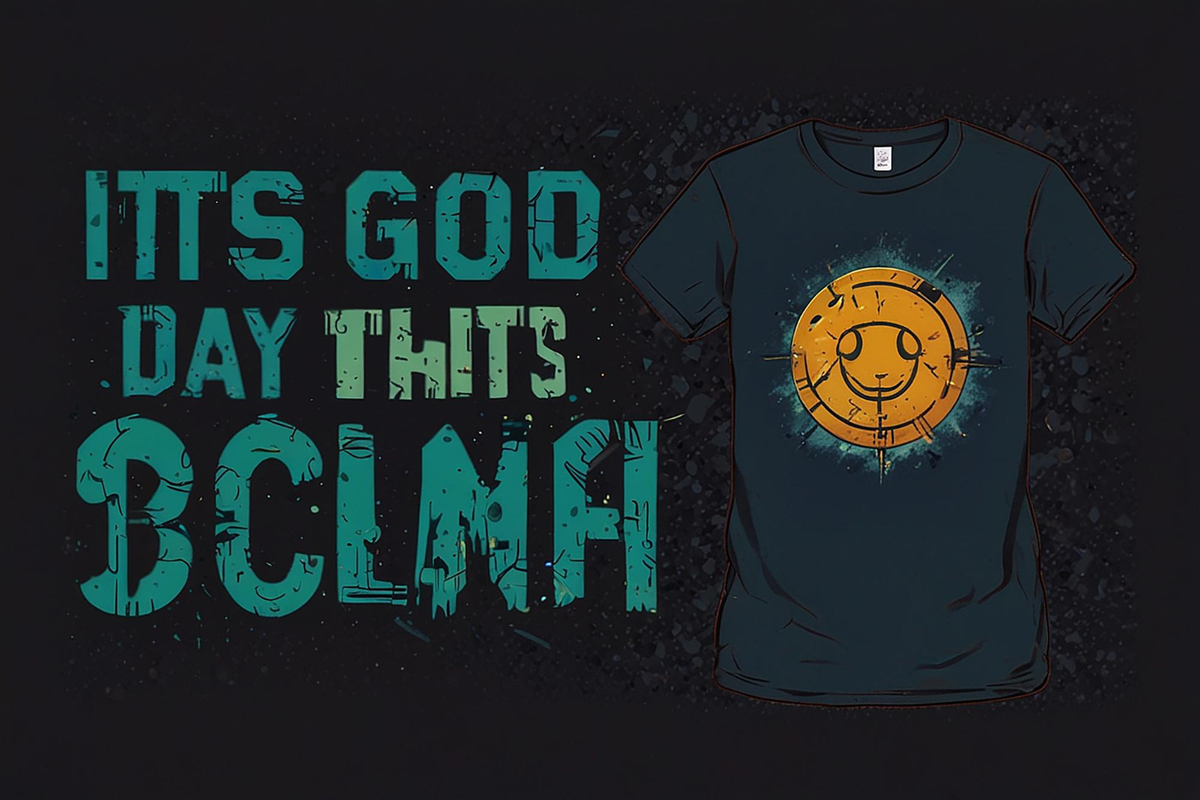UV DTF printing, short for Ultraviolet Direct to Film printing, is emerging as a groundbreaking technology within the printing industry. By harnessing the capabilities of UV printing technology, this innovative method combines the efficiency of direct-to-film printing with the ability to produce stunning, vibrant designs. As businesses seek custom printing solutions that align with the latest printing industry trends, UV DTF printing stands out for its versatility across various substrates, enabling intricate designs on fabrics, plastics, and more. Moreover, this technology supports sustainable printing practices by using eco-friendlier inks with lower volatile organic compounds, making it a responsible choice for environmentally conscious businesses. In exploring the future of this dynamic printing technique, it is clear that UV DTF printing not only meets current market demands but sets a new standard for quality and eco-friendliness in the industry.
As the landscape of modern printing continues to evolve, various terms have emerged to describe innovative techniques akin to UV DTF printing. This method, which excels in direct-to-film applications, allows for exceptional print quality and adaptability, paving the way for countless creative possibilities. The shift toward eco-sustainable solutions in the printing industry emphasizes the importance of using advanced technologies that not only meet consumer needs but also respect the environment. Many organizations are now in search of customizable printing alternatives that can effectively handle diverse materials while achieving vibrant results. Consequently, concepts such as UV-curable inks and versatile film applications are critical in shaping the future of high-quality, sustainable printing solutions.
Understanding UV DTF Printing Technology
UV DTF printing technology represents a significant advancement in the printing sector, combining UV printing with direct-to-film techniques. This modern approach utilizes ultraviolet light to cure inks immediately upon printing, yielding stunning visuals with superior durability. Unlike traditional methods that require lengthy drying times, UV DTF allows for rapid activation of inks, thus streamlining production workflows and enhancing efficiency. This process not only facilitates intricate designs but also enables printing on a wide range of substrates, making it a preferred choice in diverse applications.
The underlying technology of UV DTF involves applying specially formulated inks onto a film, which can then be transferred to various surfaces. From fabrics to plastics, this technology seamlessly adheres to materials that are often challenging for conventional printing methods. As a result, UV DTF printing is becoming an essential tool for companies looking to innovate their product offerings and meet the rising consumer demand for customized solutions.
Advantages of UV DTF Printing Over Traditional Methods
One of the primary advantages of UV DTF printing is its unparalleled efficiency, enabling quicker turnaround times compared to traditional printing processes. Businesses can benefit from the rapid curing capability of UV inks, allowing for immediate handling without the risk of smudging or damage. This speed is crucial for companies that need to fulfill orders promptly and cater to just-in-time inventory demands, ultimately leading to higher customer satisfaction through faster delivery.
Additionally, UV DTF printing boasts high-quality output with vivid colors and fine detail. This precision is especially valuable in industries like fashion and promotional product design, where print quality directly impacts consumer perception. The capability to reproduce intricate designs not only enhances product appeal but also positions brands at the forefront of printing industry trends that prioritize customization and quality.
Sustainability in UV DTF Printing
As environmental concerns continue to shape consumer preferences, UV DTF printing stands out for its sustainable practices. This innovative printing method utilizes eco-friendly inks that have lower levels of volatile organic compounds (VOCs), making it a greener alternative to traditional printing techniques. By adopting UV DTF, businesses can actively participate in reducing their ecological footprint while appealing to environmentally conscious consumers who prioritize sustainable products.
Moreover, the sustainable nature of UV DTF printing extends beyond ink formulations. The technology minimizes waste by optimizing material usage and enabling more efficient printing processes. This approach aligns with broader industry trends towards sustainable printing solutions, allowing companies to position themselves as leaders in environmentally responsible manufacturing while also benefiting from potential cost savings associated with reduced material waste.
Emerging Applications of UV DTF Printing
The versatility of UV DTF printing has led to its adoption across various sectors, with the fashion industry being a notable beneficiary. Brands are now using this technology to take advantage of custom printing possibilities, allowing for intricate, unique designs that reflect contemporary fashion trends. From personalized t-shirts to bespoke accessories, UV DTF printing is reshaping how garments are produced, enabling rapid customization to meet specific consumer demands.
Additionally, UV DTF printing is revolutionizing promotional products, creating eye-catching merchandise that effectively communicates brand identity. Items such as bags, drinkware, and tech accessories can be adorned with vivid, durable prints that stand out in the marketplace. This capability not only enhances product visibility but also taps into the growing demand for personalized promotional items that resonate with consumers on a deeper level.
Cost-Effectiveness of UV DTF Printing Solutions
While the upfront investment in UV DTF printing technology may appear significant, the long-term cost-effectiveness of this method cannot be overlooked. As the technology continues to evolve, operational costs are declining, making it more accessible for small to medium-sized enterprises. The efficiency gained from shorter production times and less material waste translates into increased profit margins, marking UV DTF printing as a financially viable solution for a variety of businesses.
Moreover, the ability to produce high-quality prints in smaller batches caters to the growing trend of customized manufacturing. Companies can avoid the pitfalls of overproduction and inventory waste, aligning their operations with market demands more closely. This adaptability not only boosts financial efficiency but also ensures businesses remain competitive in the rapidly changing landscape of the printing industry.
Future Outlook of UV DTF Printing in the Industry
The future of UV DTF printing looks promising, with the global market expected to witness significant growth as industries recognize the benefits of this innovative technology. The rising demand for customized products and packaging solutions is projected to drive broader adoption of UV printing technologies, including UV DTF. This trend indicates a shift in how businesses approach product design and consumer engagement, prioritizing personalization alongside quality.
As more companies integrate UV DTF printing into their processes, we can anticipate continuous innovation in printing applications. From fashion to interior design, the technology’s versatility provides a foundation for growth, proving that UV DTF printing is not merely a trend but a transformative solution for the future of the printing industry. Companies willing to embrace this technology stand to gain a competitive edge and unlock new opportunities in the marketplace.
Frequently Asked Questions
What is UV DTF printing and how does it work?
UV DTF printing, or Ultraviolet Direct to Film printing, uses UV light to cure inks on a film, enabling the creation of vibrant, high-quality designs. This innovative technology allows for printing on various substrates, making it ideal for custom printing solutions.
What are the advantages of using UV DTF printing over traditional printing methods?
The primary advantages of UV DTF printing include its versatility across different materials, quicker drying times, and enhanced environmental friendliness due to reduced VOC emissions. These factors streamline production processes and cater to the growing demand for sustainable printing in the industry.
How does UV DTF printing contribute to sustainable printing practices?
UV DTF printing supports sustainable printing by utilizing eco-friendlier inks with lower VOCs. This commitment to reduced environmental impact aligns with current industry trends towards sustainability, appealing to environmentally conscious consumers seeking quality without compromising on eco-friendly standards.
What industries can benefit from UV DTF printing technology?
UV DTF printing has applications across multiple industries, including fashion for custom apparel, promotional products for businesses, interior design for unique decor, and packaging solutions for personalized consumer goods. This versatility makes UV DTF a valuable tool for various market segments.
How does UV DTF printing enhance efficiency and turnaround time for businesses?
UV DTF printing significantly increases efficiency with its rapid curing process, allowing immediate handling of printed products. This means businesses can fulfill smaller, customized orders quickly, aligning with the fast-paced demands of today’s market and supporting just-in-time production strategies.
What are the current trends in the UV printing technology market?
The UV printing technology market is experiencing growth driven by the increasing demand for customized products and high-quality prints. As UV DTF printing continues to advance, businesses are embracing these innovations to stay competitive, meet consumer preferences, and capitalize on market trends.
| Key Points | Details |
|---|---|
| What Is UV DTF Printing? | Utilizes UV light to cure ink on films, creating vibrant designs for various surfaces. |
| Versatility Across Substrates | Prints on fabrics, plastics, metals, and wood, serving diverse market needs. |
| Quick Turnaround and Efficiency | Designed for rapid production with speedy drying times, ideal for customized orders. |
| Environmental Impact | Uses eco-friendly inks with fewer VOCs, appealing to sustainability-focused consumers. |
| Cost-Effectiveness | Initial investment may be high, but decreasing operational costs improve profit margins. |
| Market Growth | Projected significant expansion due to demand for customized products and quality printing. |
| Applications | Includes fashion, promotional products, interior design, and packaging solutions. |
Summary
UV DTF printing is poised to revolutionize the printing landscape with its innovative approach and versatility. This cutting-edge technology combines the strengths of traditional printing with digital efficiency, allowing for high-quality outputs on a range of substrates including fabrics and plastics. The advantages of quick production times and eco-friendly inks make UV DTF printing a more sustainable and cost-effective solution for businesses. As industries continue to discover the vast applications of UV DTF printing, from fashion to interior design, it is clear that this technology will play a crucial role in shaping the future of customized printing.



